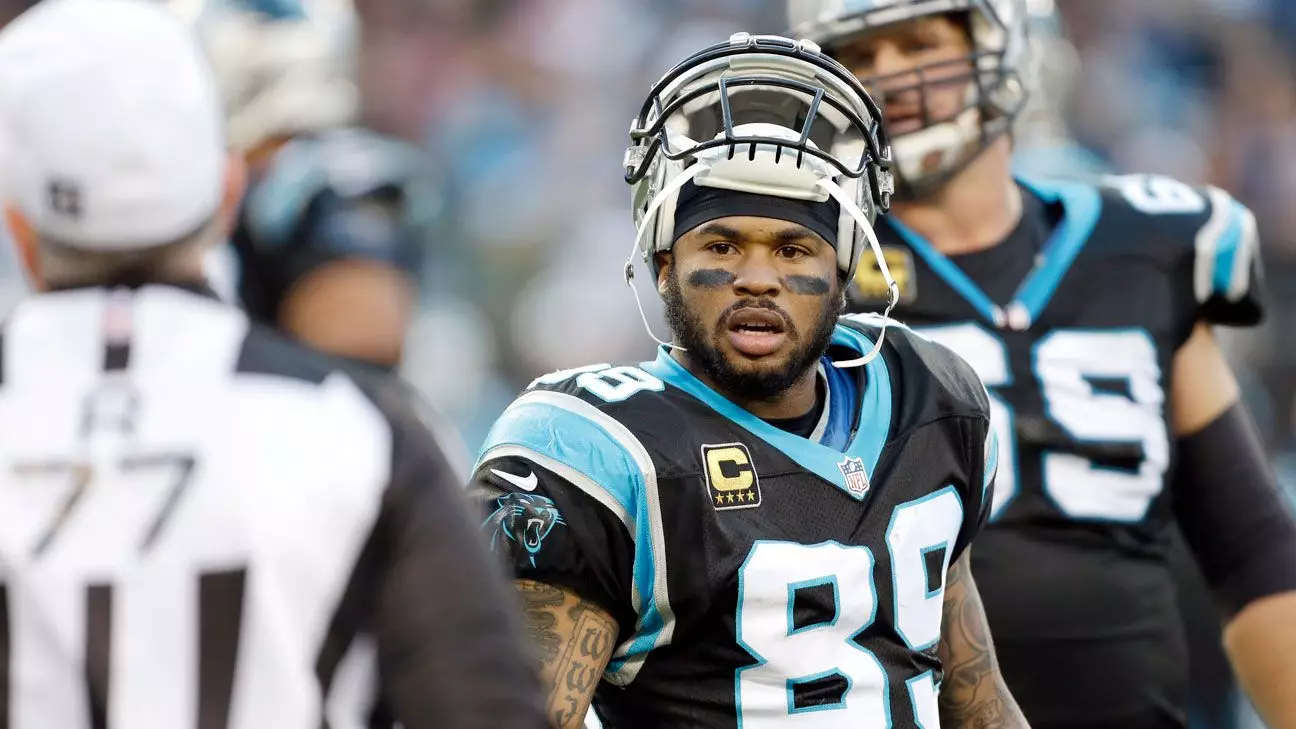The NFL is a league notorious for its drama both on and off the field, and the latest chapter in the Carolina Panthers’ storied history is an exemplary case. Former players Steve Smith Sr. and Cam Newton have found themselves at odds over a controversial statement made by Newton regarding his time with the Panthers. This incident has ignited a conversation about accountability, leadership, and the culture within an NFL locker room.
Cam Newton, once heralded as the savior for the struggling Carolina Panthers after being selected first overall in the 2011 NFL Draft, recently made remarks that have reverberated across the sports community. Speaking on *The Travis Hunter Show*, he reflected on his entry into the franchise, labeling his new teammates as “losers” and lamenting on their perceived lack of preparation and winning mentality. While Newton’s success is undoubted—leading the team to a Super Bowl and earning accolades including NFL MVP—his choice of words raised eyebrows, particularly among those who played with him during his formative years in the league.
The Panthers had endured a dismal 2-14 season leading up to Newton’s arrival, and though it might have been an honest reflection of the franchise’s struggle, Smith’s vehement response suggests that such a characterization does not resonate well with the players who fought through that adversity.
Steve Smith Sr., a stalwart receiver for the Panthers and a soon-to-be Hall of Famer, reacted strongly to Newton’s comments, emphasizing a sense of camaraderie among former teammates. His posts on X (formerly Twitter) called out Newton for what he considered a disrespectful dismissal of the collective effort and integrity of the locker room. Smith’s assertion — “53 man locker room – 1 = 52 losers” — serves as a reminder that labeling a group arbitrarily undermines the complexity of team dynamics.
In his follow-up comments, Smith contextualized his frustration by acknowledging the team’s poor record while contrasting it with the intrinsic value each player and coach contributed during that period. His succinct rebuttal epitomized a larger debate about accountability in team sports; Smith accuses Newton of oversimplifying a multifaceted situation and encourages respect for the sacrifices made by his former teammates.
The rift between Newton and Smith sheds light not only on their individual experiences but also on the broader culture and expectations within the NFL. In a league where every player is expected to contribute to the team’s success, it is crucial to maintain a sense of unity. Disparaging remarks about past performances can fracture relationships among current and former players, potentially misrepresenting the legacy of an entire franchise.
Moreover, the narrative that emerges from this feud highlights the importance of leadership in professional sports. Newton’s ascent to stardom came with immense responsibility, and how he chooses to articulate his experiences can impact perceptions regarding his former teammates and the franchise itself. Smith’s rebuttal serves as a reminder that while individual accolades are worthy of celebration, a player’s impact on a team transcends statistical success.
As fans and analysts dissect the unfolding tensions between Smith and Newton, the underlying themes of respect and accountability come to the fore. In professional sports, the essence of teamwork relies on mutual support and recognition of each individual’s efforts, regardless of the outcomes. Newton’s comments may have been rooted in personal beliefs molded by his experiences, yet they have inadvertently prompted a necessary discussion about legacy and the collective identity shaped by every player within the franchise.
Ultimately, while both athletes have made indelible marks on the Panthers—a team that continues to evolve—their divergent views illustrate a critical lesson: the importance of honoring one’s past while striving to build a better future together. In a league characterized by fierce competition and breaking news, it is stories like these that affirm the reality of human relationships within the realm of professional sports.


Leave a Reply